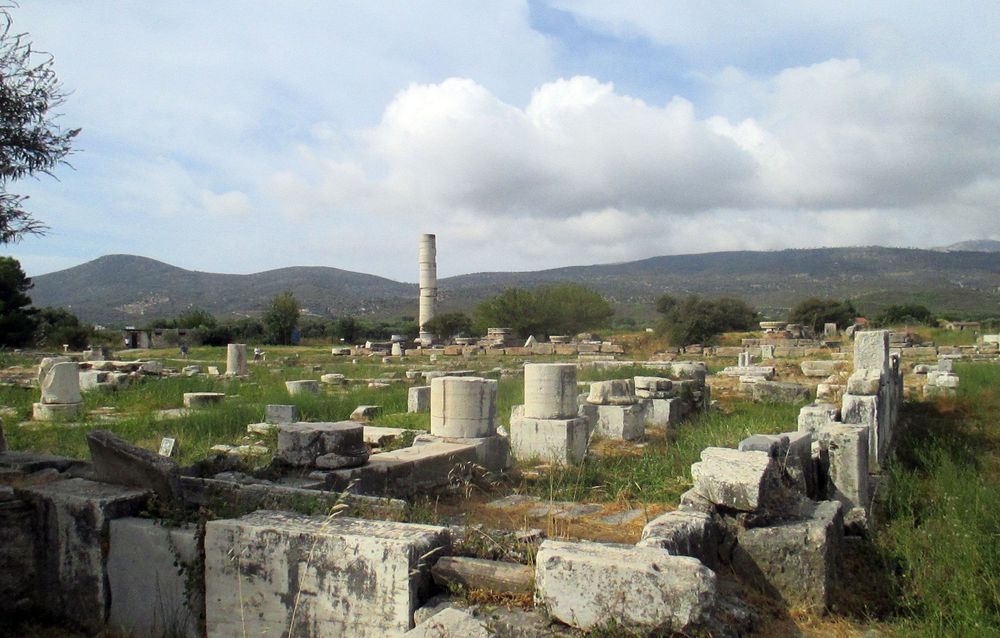The most important monuments of the site are: The temple of Hera
Ionic dipteral temple built during the tyranny of Polycrates (538-522 B.C.).
Only one column is still standing today, preserved up to half of its original height, while the foundations are preserved up to the base of the walls and the stylobate.
Herodotus considered this temple as the largest in Greece. It follows almost exactly the contour lines of the cella and the pronaos of the older temple of Rhoikos (570/60 B.C.), but it is much larger (108.63 x 55.16 m.). This difference in size is due to the addition of a third colonnade to the front and back of the peristasis, apparently following the example of the temple of Artemis at Ephesus, which had been built slightly earlier. The temple had a total of 155 columns, belonging to four different sizes and types. The entablature must have been made of wood. Since no tiles were found, it is suggested that the roof was never completed.
The Great Altar
Very large even in its earlier phases, occupied always the same position. Seven successive phases have been distinguished, of which the earliest, a small structure built of rubble, dates from the Late Bronze Age.
The altar of the 8th/7th century B.C., for unknown reasons (possibly connected with the cult) was not placed on axis to the temple, but was orientated NW / SE.
It acquired its monumental form in ca. 560 B.C., and was almost contemporary with the monumental temple of Rhoikos and Theodoros, placed on its axis. On the basis of the preserved foundations, its size is estimated to 36.50 X 16.50m. The temple opened to the main sacrifical area which was surrounded on three sides by a wall, 5-7m. high.
This was decorated with impressive cymatia, and, on the interior, with a frieze showing fighting animals and sphinxes.The free edges of the two walls bear richly decorated anta capitals.In imperial Roman times (1st-2nd centuries A.D.) the altar was rebuilt of marble, and decorated with copies of the Archaic architectural decoration.
The Sacred Road
The road leading from the city of Samos (present-day Pythagoreion) to the sanctuary, was an important feature of the landscape already in the beginning of the 6th century B.C., at the latest.Being the main access to the sanctuary, it was adorned with votive monuments closely spaced along its whole length. The colossal marble kouroi, found on the road, and the Geneleos Group (a replica of which has been placed on the north end) give an idea of the magnificence of the site as early as the Archaic period.
The massive stone lining of the road surface, parts of which have been uncovered up to the Pythagoreion, was constructed in about A.D. 200. In 1980, excavations carried out in search of the main entrance to the sanctuary, brought to light the colossal kouros, now exhibited in the Samos Museum.
